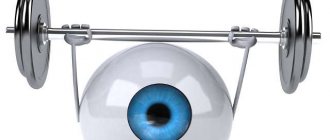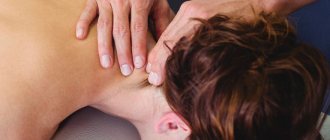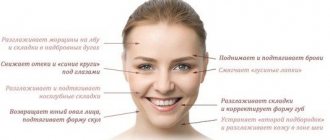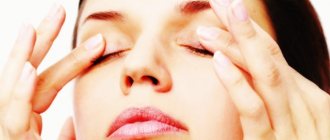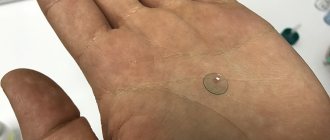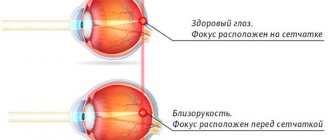- According to the Windolf method
- Description of the Minmu Gong exercise method
Visual impairment is a fairly common phenomenon that affects not only older people; the pathology can manifest itself at any age. There are two main types of visual impairment: myopia (myopia) and farsightedness (hyperopia), which are accompanied by constant eye fatigue, dryness and headaches. Special gymnastics can restore the mobility of the eye muscles and restore visual acuity.
The effectiveness of gymnastics for myopia
Many complexes promise to restore visual perception in myopia without surgical intervention. Therefore, an increasing number of patients are interested in special gymnastics for the visual organs.
Such exercises are accommodation training, which allows the eye to clearly see objects at far and near distances.
If a person can train the ciliary muscle, which tenses when looking at a nearby object and relaxes when looking at a distant object, its normal functioning can be maintained.
Vision training allows you to:
- improve microcirculation;
- strengthen the oculomotor muscles;
- restore the accommodation reflex;
- activate the functions of the respiratory and cardiovascular systems;
- slow the progression of myopia or stop the disease.
Cyclic exercises of moderate intensity can improve visual perception. However, they must be performed regularly over a long period.
Exercise therapy for high myopia is also useful. Therapeutic exercise can reduce the degree of myopia, but at a high stage it will take at least several months of daily exercise to obtain a slight positive result.
Who should not exercise to improve vision?
Eye gymnastics for myopia is one of the most accessible and safe methods used to slow the development of pathology. Performing exercises allows you to relax the muscles of the eyeball and improve the quality of vision. Not every person can correct myopia in this way. “Harmless” eye exercises have certain contraindications. These include:
- retinal disinsertion;
- infectious eye diseases;
- postoperative period.
If you have a retinal detachment, doing exercises can lead to deterioration of the inner lining of the eye. Often this occurs due to an attempt to normalize blood circulation. Many sets of exercises include eyelid massage. When there is an inflammatory process in the area of the visual organs, it can cause pain and increases the risk of the spread of microbes.
Performing eye exercises to restore reduced vision is not recommended after ophthalmic surgery. It is necessary for the visual organs to fully recover after surgery. It is advisable to start doing eye exercises no earlier than 6 months after surgery.
Gymnastics for the eyes
Bates exercise system
This technique has not yet been recognized by science. A non-drug method of restoring vision was invented by William Horatio Bates. He concluded that a significant portion of refractive error develops as a result of abnormal muscle tension.
The exercises developed by Bates accustom the eyes to passive vision and relax them.
Palming:
- Take a comfortable sitting position. It will be more convenient if you sit at the table.
- Cross your fingers. Cover your eyes with your joined palms. Sunlight should not penetrate your fingers, and your palms should not pinch your nose.
- Calm your breathing and wait until the glare disappears. When maximum darkness comes, it means that the level of excitation of the nerve cells has decreased and the eyes have completely relaxed.
The second exercise is psychotechnics. A person is immersed in pleasant memories and relaxes as much as possible. Close your eyes and concentrate on something positive, try to reconstruct the event. This technique is recommended to be used with palming, but with open eyes. This can be achieved by regularly performing psychotechnics.
Bates recommends sunbathing. This system is called solarization. Close your eyelids and turn your face towards the sun. If discomfort occurs, you should blink frequently.
Complex by M. D. Corbett
Before performing the Corbett method, it is recommended to stretch your neck muscles. Complete the following exercises: Corbett is a student of Dr. Bates and has improved and developed her teacher's theory of improving visual perception without glasses or surgery. She also developed her own complex. To perform the exercises, the Sivtsev table is used. Algorithm of actions:
- Move 2 meters away from the table.
- Bring the drawn mini-table directly to your eyes.
- Read the first line from a small table, move it away, read it at arm's length.
- Look at the same line, but in a large table.
- Close your eyes and make a few turns to the sides.
- Repeat from point 1, but read the second line.
Thus you need to get to the last line. Slowly perform each step without losing your breath.
Gymnastics from R. S. Agarwal
Professor Agarwal systematized the Bates technique. Based on it, he developed his own complex. To perform this you will need an OM card.
Algorithm of actions:
- The card is placed at a distance of 30 cm from the face.
- Focus your gaze on the central part of the picture, mentally realizing that it has more contrast.
- Move your eyes around the circle, rotating your head. When moving, close and open your eyelids. Perform the exercise slowly, monitor your breathing.
- Move the card to a distance 2 times greater, but not more than 1.5 m. Perform several approaches.
Next, repeat the exercise only with half-closed eyes. Helps train the accommodative reflex and strengthen muscles.
A set of exercises from M. Windolf
Like previous professors, Windolf is a continuator of the Bates method. He pays more attention to improving accommodation. Windolf believed that the therapy was more effective in combination with relaxation of the tension of the eye muscles.
He proposed the following gymnastics complex:
- Place any object at a distance of 40 cm from the eyes. Blink, pause at times and close your eyelids completely.
- An object located at the same distance is mentally reduced in volume. When performing this exercise, squeeze the orbital muscles, which give the feeling of retracting the eyeball back.
The technique allows you to reduce the time of fatigue, relieve discomfort in the eye area and pain in the head.
Exercise system from Zhdanov
Gymnastics is prohibited during the rehabilitation period after eye surgery, if there is a threat of retinal detachment or ruptures. It is not recommended to use glasses when performing this task.
Exercises are performed at least 3 times a day for 10 minutes. This is more effective than a one-time lesson for half an hour.
Method according to Zhdanov:
- Stand with your feet shoulder-width apart. Blink your eyes and sway slightly, moving from one leg to the other. Swaying, blinking your eyes. Make side turns. Do 10 repetitions, ending the exercise with blinking. Turn your head in different directions. Make sharp bends 2 in one direction. First right and left, then back and forth. After the exercise, blink again.
- Massage your hands until warm and do the following: press the inner corner and vibrate. Repeat the same with the outer corner of the eyes.
- Draw diagonals with your eyes, helping yourself with your hands. Draw a rectangle and other shapes. Shake your hands to relieve tension.
- Draw a dial with your eyes. Finish the exercise by blinking.
The gymnastics for the eyes ends with reading words. The first exercise is performed. At a distance of 1 meter, a sheet of words is attached, each line of which has smaller letters. You need to read the words while swaying.
Avetisov method
The professor’s technique gives positive results in children and adults. It relieves spasm of accommodation and relaxes the ciliary muscle.
Set of exercises:
- Take a comfortable sitting position. Keep your head straight. Close your eyes, open your eyes wide.
- Flash quickly, make intense movements.
- Extend your hand in front of you, fix your gaze on your finger. Gradually move your finger closer to your eyes until the image doubles.
- Perform a massage in a sitting position, then a series of 3-second pressure on the eyeballs.
Reviews from ordinary people about different methods
Regular eye exercises to improve vision help prevent myopia and farsightedness from progressing; reviews from ordinary people can be read below:
- Vladimir, 35 years old, programmer: “I work with a PC every day, so at the end of the day my eyes are dry and very tired. I began to notice that my vision was gradually deteriorating. I began to regularly perform gymnastics using the Bates method. I take breaks at work every hour and a half. As a result, the eyes get much less tired, the headaches have disappeared, and visual acuity has gradually begun to return.”
- Galina, pensioner, 65 years old: “I have been diagnosed with farsightedness for 5 years now, which is gradually getting worse. I started drinking and doing exercises according to the Norbekov method. I noticed that I began to distinguish objects nearby that were previously very blurry.”
- Ivan, 14 years old, schoolboy: “I like to read very much, so I’m always with a book or phone in my hands. Over the past year, vision has dropped to -1.5 in both eyes. Mom found and printed out a table of letters and Zhdanov’s gymnastics, and I began to do this and spend less time on the PC. I noticed that my eyes became less tired, and recently at an appointment with an ophthalmologist I learned that my vision had become -1.”
There are many methods and exercises that prevent lens pathologies from progressing. Gymnastics for the eyes to improve vision, videos of any of the techniques listed above are available on the Internet, they do not allow eye diseases to progress, you just need to find your own method.
How to get the most out of exercise
To get the maximum effect from eye gymnastics, it is not enough to increase the number of approaches. A set of measures is needed to combat myopia.
To enhance the effect, the techniques are used simultaneously with music therapy. Calm music allows you to close your eyes and relax; it acts similarly to yoga, only the extraocular muscles work.
Chromotherapy has a good effect. This is a natural treatment using electromagnetic radiation. It has a multifaceted effect on a person. Red stimulates blood circulation, accelerates microcirculation and prevents age-related changes. Green light is calming and reduces inflammation. Yellow - activates brain activity, improves memory and fights insomnia.
Proper nutrition plays a significant role. It is important to consume more products with retinol, ascorbic acid, and riboflavin. These vitamins improve the quality of visual perception by 10%.
Training glasses
Perforated glasses (with holes) are a medical device that has its own indications and contraindications for wearing. Used for refractive errors, asthenopia and anisometropia.
Contraindicated in case of increased intraocular pressure, divergent strabismus. They will not help solve the problem, but on the contrary, will worsen the condition. For progressive myopia, prohibited.
Perforated products are a plastic frame with opaque plastic plates containing many holes. Wear in sufficient light and no more than 2-3 hours a day.
To achieve a positive effect, while wearing it, it is recommended to look at distant and near objects, and examine objects at different distances.
They will not cure defects in visual perception, but will serve as an additional incentive for its restoration. They correctly distribute the load, giving rest to tense extraocular muscles and loading weak ones. Perforation glasses relieve asthenopia. With prolonged use, the deterioration of visual perception stops.
Treatment of myopia
In most cases, vision correction for myopia is carried out using conservative methods. It consists of wearing glasses or contact lenses. This method is effective, but it does not allow you to get rid of refractive error. The most effective method is laser correction. Operations can be performed only for myopia up to -12/-15 diopters. The following methods have proven themselves well:
- LASIK;
- SUPER LASIK;
- EPILASIK;
- FemtoLASIK.
Basically, these techniques differ in the degree of impact on the visual organs and the method of shaping the surface of the cornea of the eye. If a person’s visual acuity is up to -20 diopters, a lensectomy can be performed - replacing the lens with an intraocular lens. In our country, this method has not yet found widespread use.
With timely correction of myopia, visual acuity can be maintained. Preventive examinations play a significant role in this. Ophthalmologists recommend limiting physical activity and taking vitamins B and C. Exercising the eyes for myopia to improve vision is a very effective method of maintaining its sharpness. It is very important to do the exercises for those people who spend a lot of time at the computer.
